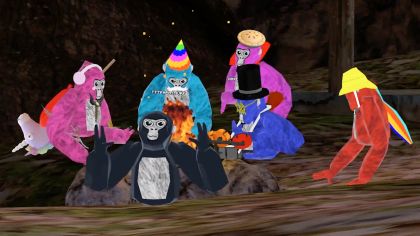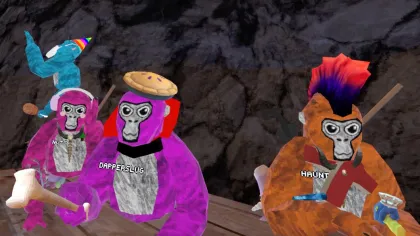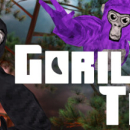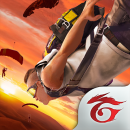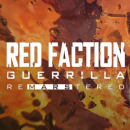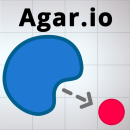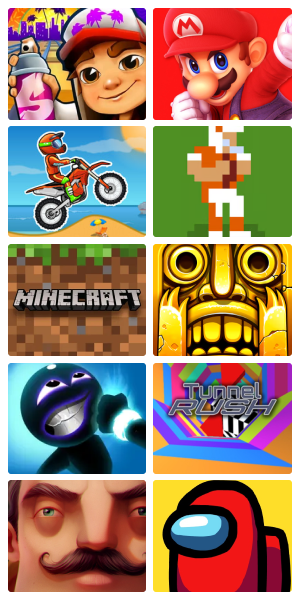Gorilla Tag
The moment I stepped into Gorilla Tag, I felt an immediate surge of excitement and curiosity. In a virtual world where physics-based movement and simple yet challenging gameplay intertwine, I was ready to experience something refreshingly different. I remember adjusting quickly to the game's unique control scheme, where using my arms to propel myself turned every move into an acrobatic adventure. As I navigated through virtual environments, the feeling of freedom and playful exploration captivated my imagination in ways I hadn’t encountered in many traditional VR experiences.
The Unconventional Movement Mechanics
One of the most appealing aspects of Gorilla Tag is its distinctive movement system. Instead of relying on buttons or joystick movements, you use your arms to swing, climb, and leap. The naturalism behind this mechanic immediately drew me in. Rather than navigating with a traditional, mechanical control, I found that the game challenged me to move in physically engaging ways that simulated the motion of a primate. The mechanics required a blend of timing, spatial awareness, and precision, offering an unusual yet immersive role-playing exercise in physicality. Every movement felt both natural and exhilarating, pushing me to experiment with different strategies for locomotion.
A New Perspective on Multiplayer Interaction
Gorilla Tag’s multiplayer aspect has redefined what it means to interact with fellow players in a virtual space. In my sessions, I experienced an immediate sense of community as players engaged in friendly exchanges, cooperative challenges, and spontaneous races through diverse terrains. The game dispenses traditional voice chats and instead relies on physical communication and gestures, which created a playful atmosphere. Watching others navigate the environment with the same joyful clumsiness as I did often sparked laughter and camaraderie. Each multiplayer session unfolded as a series of shared adventures, where teamwork and friendly rivalry made every encounter uniquely memorable.
The Aesthetic Charm of the Game
The visual style of Gorilla Tag struck me as refreshingly minimalistic yet strikingly effective. The environments possess an almost minimalist charm that reminds one of well-designed playgrounds. The simplicity in detail did not detract from the overall immersive experience but instead emphasized fluid animations and smooth interactions. The avatars and natural landscapes combined to recreate a sense of being in a vast, open world bathed in vibrant colors. While the low polygon count might seem unassuming at first glance, it brought a distinct retro appeal that harmonized with the game's energetic spirit.
Gravity and Physics: The Pillars of Challenge
The role that gravity and physics play in Gorilla Tag cannot be understated. Every jump, swing, and grab against virtual surfaces felt weighty and real, making each movement a precise experiment in balance and momentum. I spent hours honing the perfect moment to extend my arm and catch onto a branch or wall, learning from my miscalculations and perfecting my technique over time. This attention to realistic physics dynamics deepened the engagement, transforming what might have been a simple chase into a thoughtful interplay between body and environment. The constant struggle against gravity also provided it with a refreshing twist, as each leap brought me closer to the exhilarating rush of mastering the simulation.
Exploring Varied Environments and Challenges
Every session in Gorilla Tag introduced me to a new layout or configuration of challenges. The game’s evolving environments keep the experience fresh, ranging from open grounds where speed is key to more confined spaces that demand strategic planning. I jumped, climbed, and swung through natural obstacles meticulously placed to challenge my agility. Each setting was crafted carefully to encourage both competitive spirit and exploratory curiosity, molding every session into a unique physical puzzle. Whether evading a particularly agile opponent in a narrow passage or racing across a vast virtual field, I was consistently aware that no two playthroughs were ever the same.
Personalized Feedback from the Digital Playground
There is a personal satisfaction that comes from echoing your real-life movements in virtual space. Gorilla Tag offers subtle feedback that rewards persistence and effort. Each successful swing or well-timed leap was met with a gratifying sense of achievement, motivating me to push further and explore even riskier maneuvers. Over time, I observed my own progress, learning to control my virtual self with increasing precision and confidence. This asset of continuous learning, combined with an in-game challenge that scales with your skill, transforms the gaming experience into a modern form of athleticism, one that is deeply engaging.
Soundscapes and Environmental Audio
The audio design in Gorilla Tag contributes significantly to the immersive nature of the game. The ambient sounds of the virtual jungle or rocky terrains amplify the tension during high-speed pursuits. Even the rustle of leaves and distant echoes added layers of depth to the experience. My sessions were often accompanied by subtle background music that emphasized the rhythm of movement and the heartbeat-like pace of the chase. Moreover, positional audio cues provided important navigational tips and increased my spatial awareness. This fusion of sound effects and interactive audio elements has been instrumental in creating a tangible virtual reality that feels almost palpably physical.
Adapting to the Learning Curve in VR
Adjusting to a VR game like Gorilla Tag demanded a period of adaptation and patience. I recall the first few moments feeling disoriented as I struggled to match my natural body movements with the in-game expectations. The steep yet rewarding learning curve was both challenging and invigorating. Each misstep was a learning opportunity that slowly improved my reaction times and spatial judgment. The freedom to explore and fail without consequence allowed me to embrace the game’s passion for physicality, gradually transforming awkward movements into fluid motions that became second nature. This adaptive process underscored the importance of perseverance and focus in mastering unconventional control mechanics.
Physicality and VR Fitness Aspects
Gorilla Tag unexpectedly evolved into a form of workout that I genuinely looked forward to. The physical activity required for effective gameplay adds an invigorating dimension to the entire experience, blending the line between play and exercise. Engaging in full-body movement, from quick dashes to extended leaps, touched on cardiovascular skills and coordination that surpass the static nature of traditional gaming. I found myself sweating and laughing through intense matches, appreciating how the game naturally incorporated fitness into its design. This integration of physicality offers a refreshing change from the sedentary tendencies often associated with many digital entertainment experiences.
Innovative Social Dynamics in Virtual Reality
One of the more fascinating elements of Gorilla Tag is its facilitation of innovative social connections. The absence of conventional in-game communication tools drives players to rely on spontaneous physical and emotional expressions to interact. The sheer unpredictability of these exchanges fostered an environment where playful banter and shared moments of triumph became the norm. I cherished every lively encounter, whether it involved helping a newcomer adjust to the unique movement mechanics or participating in a high-spirited chase with old friends. The resulting community felt less like a competitive battleground and more like a cooperative playground, where every session served as a social experiment in virtual spontaneity.
The Thrill of Unpredictable Gameplay
Perhaps one of the most compelling aspects of my ongoing adventures in Gorilla Tag has been the unpredictable nature of every match. No matter how well I thought I understood the nuances of movement and strategy, the interactions with other players introduced an element of delightful uncertainty. These dynamic encounters ensured that I remained vigilant, constantly adapting to the ever-changing scenarios that unfolded. The thrill was amplified by knowing that any given moment could transition from a casual exploration into an adrenaline-fueled sprint or a masterful display of acrobatic prowess. This unpredictability has kept the experience fresh, as every session offered a new opportunity to test my limits and embrace the unexpected.
Technical Performance and Platform Benefits
From a technical perspective, Gorilla Tag impressed me with its seamless integration into various VR platforms. The performance across different devices remained robust, ensuring smooth transitions and minimal latency during gameplay. I appreciated how the developers optimized the game to run fluidly on multiple hardware configurations, providing a consistent experience that did not compromise the playability or enjoyment. The focus on maintaining a low barrier to entry by enabling access through widely available VR headsets further contributed to the game’s broad appeal. Technical challenges, when they arose, were swiftly addressed through community-driven updates and developer patches, which underscored a commitment to stability and player satisfaction.
Exploring Creative Strategies and Personal Growth
Every time I re-entered the world of Gorilla Tag, I found myself devising new strategies to navigate its physical puzzles. The inherent freedom to experiment with routes, grasp points, and timing allowed me to improve my own skill set exponentially. I began to analyze each session, not merely as a game but as a series of physical challenges that cultivated my agility and reflexes. Even when I encountered setbacks during rapid chases or when misjudging a crucial leap, I learned vital lessons in timing and precision. This continuous self-improvement provided more than just in-game advancement; it fostered a mindset of perseverance and adaptability that echoed into other areas of my daily routine.
An Ongoing Journey in a Digital Playground
Reflecting on my experiences in Gorilla Tag, I recognize that the game is much more than a conventional VR title. It has become a vibrant digital playground where physicality, strategy, and social interaction converge. The game’s mechanics invite continuous experimentation and self-assessment, pushing the boundaries of what virtual reality games can offer. The interplay between natural movement controls, immersive soundscapes, and engaging social dynamics ensures that every session is a blend of playful exploration and skill refinement. My time in Gorilla Tag has reinforced the idea that virtual reality can serve as a platform for both physical exertion and creative expression, making each moment both challenging and profoundly enjoyable.
How to Download and Play Gorilla Tag on Different Platforms
Gorilla Tag is a free-to-play game that delivers a unique movement experience in virtual reality and on select devices. Whether you are using a PC, Mac, Console, or Mobile setup, here is everything you need to know to download, install, and play Gorilla Tag.
On Windows PC, Gorilla Tag is available for download via Steam. You will need a compatible VR headset and SteamVR installed to play the game. On Mac, the game is not directly supported; Mac users may consider using alternatives such as Boot Camp to run a Windows environment or other compatible solutions. For Consoles, Gorilla Tag is currently not available on major platforms such as PlayStation or Xbox. Mobile devices also do not officially support Gorilla Tag; however, some players explore cloud gaming services to access similar experiences.
To install Gorilla Tag, simply download it from the official platform – for example, use the Steam client on PC. Follow the on-screen instructions during the installation process for a smooth setup. Make sure your device meets the necessary requirements, especially on PC where you will need a Windows machine with a VR-ready graphics card and sufficient processing power.
On PC, the system requirements for Gorilla Tag include a compatible Windows operating system, a VR headset, and sufficient hardware to support SteamVR. For users on other platforms, be aware that additional hardware or alternative methods such as cloud gaming may be required.
Gorilla Tag is an online multiplayer game, and using cheats or mods is strictly prohibited. Attempting to use such modifications may lead to a permanent ban from the community.
It is also important to note that Gorilla Tag cannot be played unblocked in environments like schools or workplaces without relying on VPNs or cloud gaming platforms, which might be restricted. Always follow the official guidelines when installing and playing the game.
To download the app, you will get links to the Official Website and/or official digital markets.
